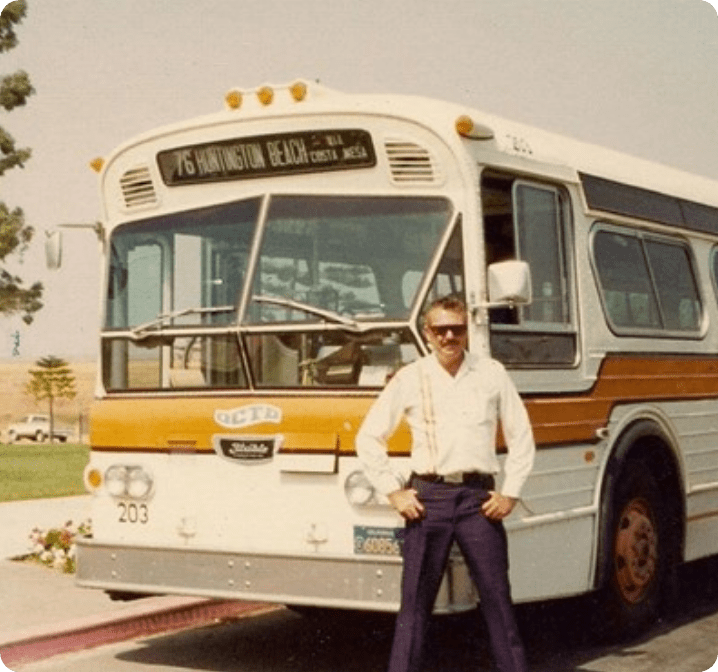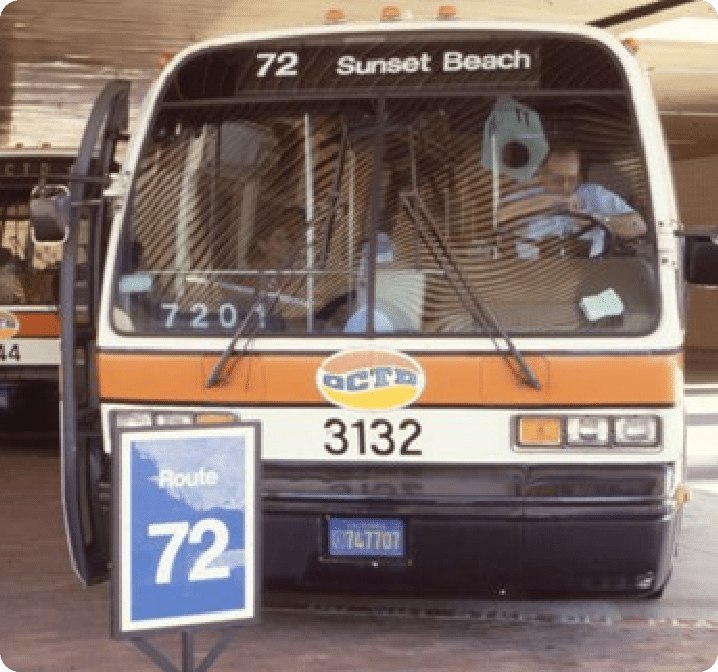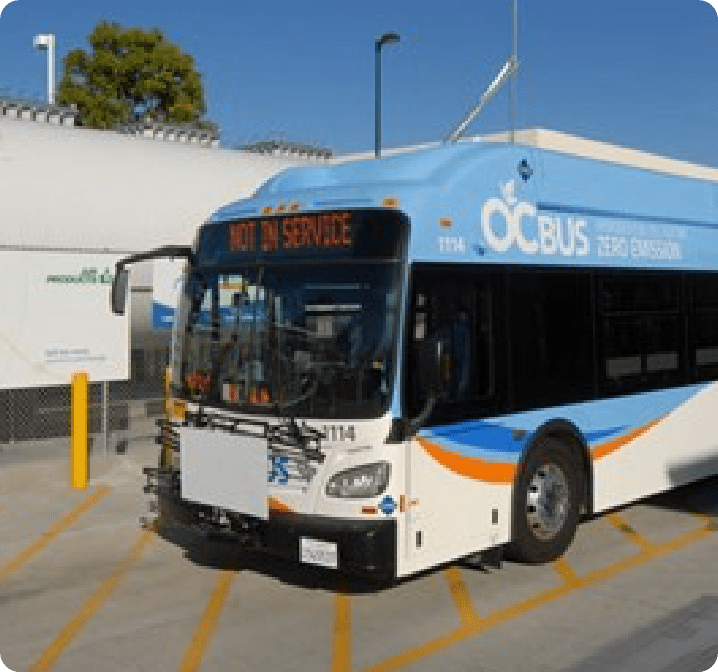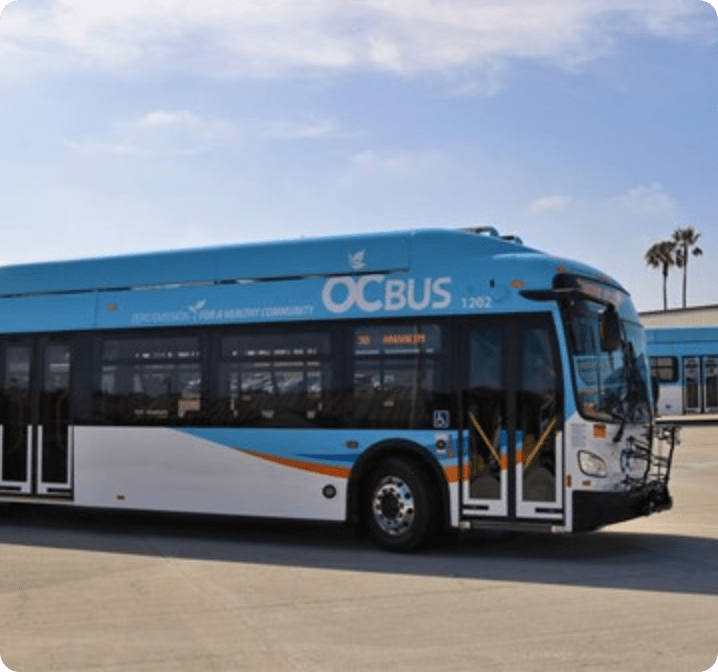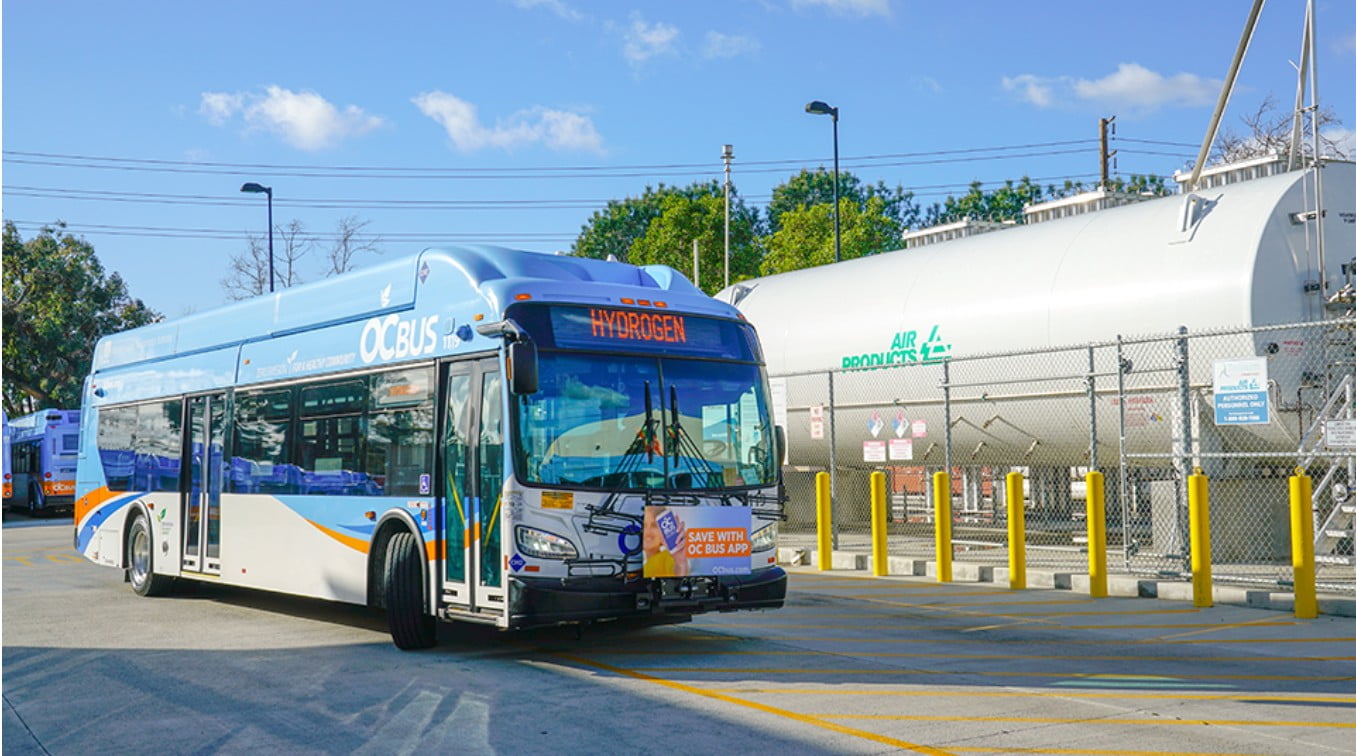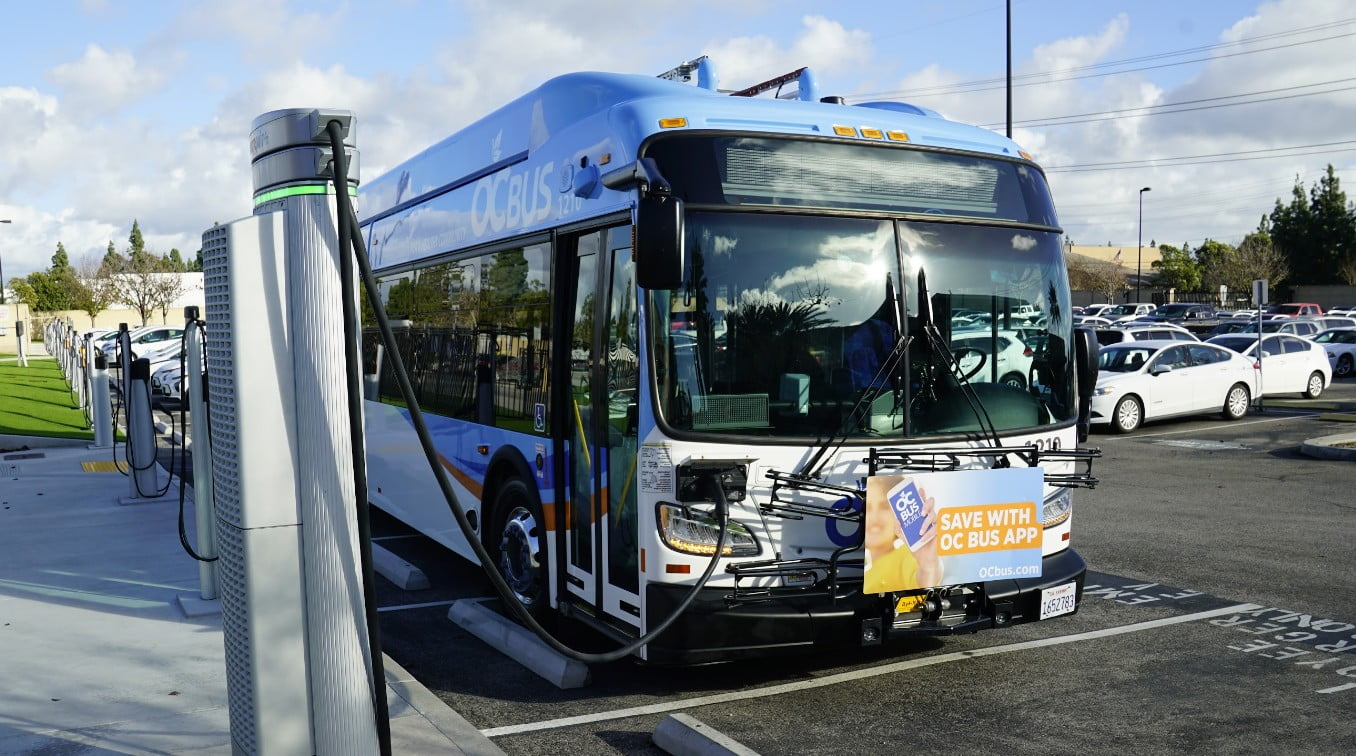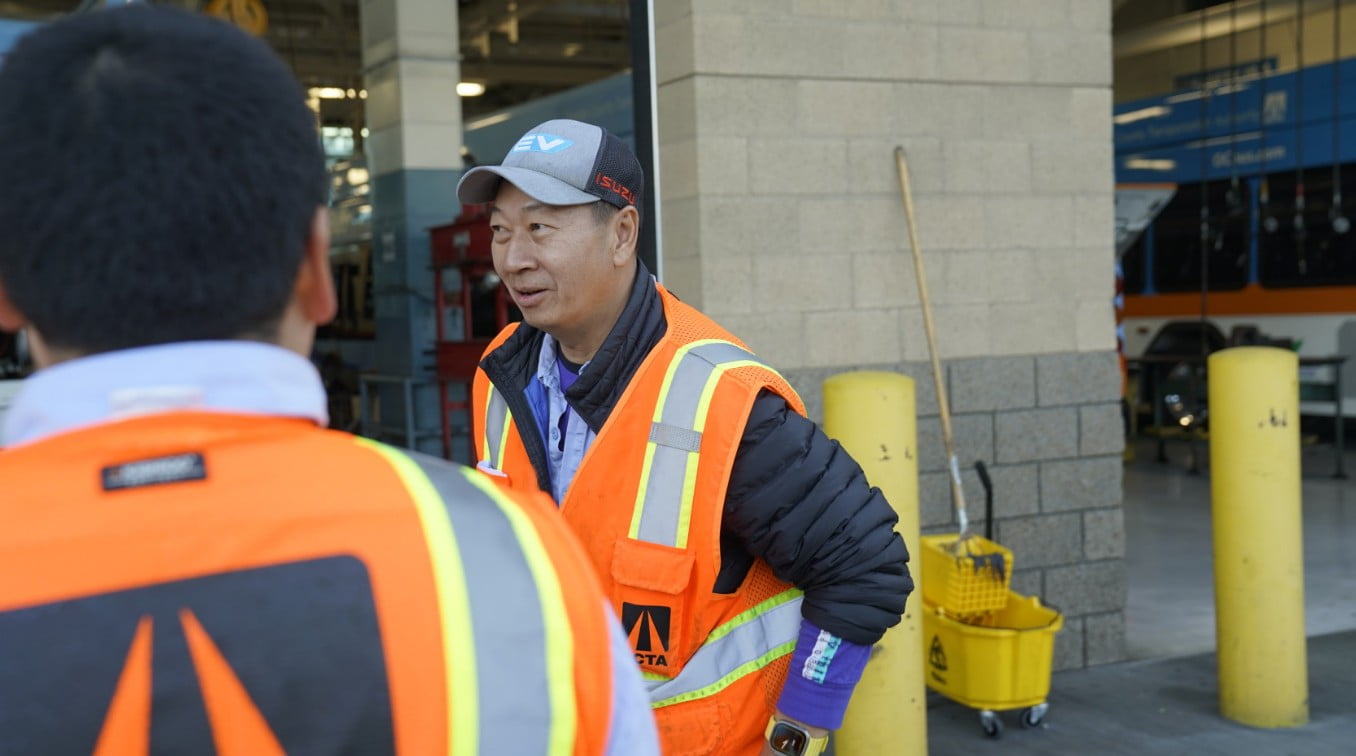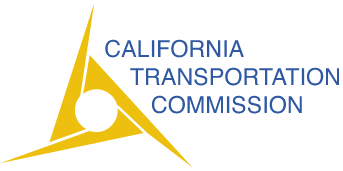Get ready for your best ride.
For your comfort and the good of all, we’re testing two types of zero-emission buses to see which is the best for Orange County. Thoughtfully customized for superior comfort and convenience, these sleek, quiet electric buses deliver rides that are, quite simply, among the best in the country.
Two technologies, zero emissions.
We’re committed to 100 percent zero-emission buses by 2040. Along the way, we’re testing two types of buses to determine which technology, or mix of technologies, will provide the best service on Orange County streets.
Hydrogen Fuel Cell Electric Buses
Hydrogen buses offer a clean and sustainable alternative to traditional fossil fuel buses, with many benefits such as zero emissions, high efficiency, and quiet operation.
-
In 2020, we built the largest hydrogen fueling station for transit in the nation to power our growing fleet.
-
Powered by hydrogen fuel cells which convert hydrogen gas into electricity to power electric motors, these buses emit only water vapor.
-
The hydrogen fuel-cell electric buses use the same standard equipment as the CNG buses, with the fuel cell acting as an onboard battery charger.
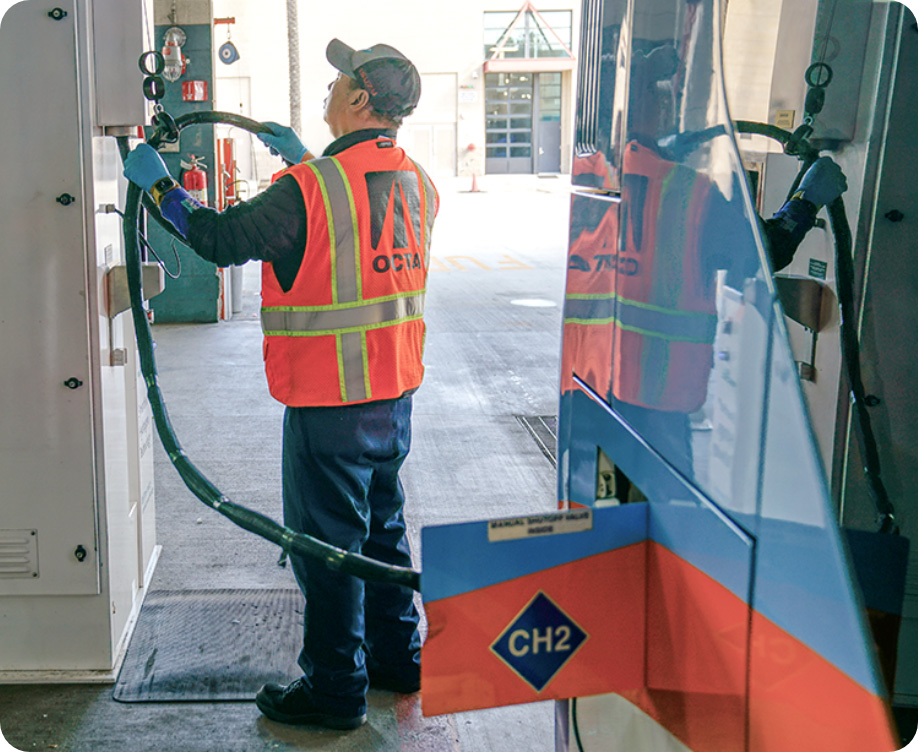
10 buses
Currently in ServiceAdding 40 additional hydrogen fuel-cell electric buses
250 miles
Operating RangeRunning on 80 percent of OC Bus routes
6 minutes
To RefuelCan fuel 50 buses per day at the Santa Ana base
Plug-in Battery Electric Buses
Just like electric cars, plug-in battery electric buses get their power from a charging station connected to the electrical grid.
-
These buses store electricity in roof-mounted batteries.
-
Plug-in battery electric buses are zero emission; there’s no fossil fuel or internal combustion engine to pollute the air.
-
The plug-in battery electric buses incorporate the same standard equipment as the CNG buses but operate exclusively on 100 percent battery-electric power.
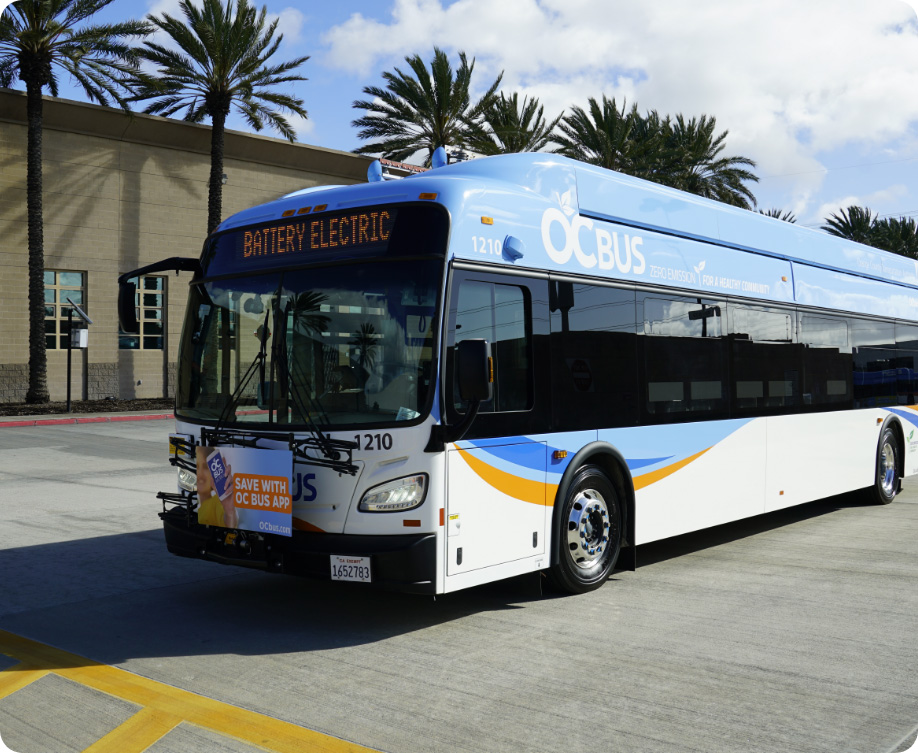
10 buses
Currently in ServiceAdding 10 additional battery electric buses
150 miles
Operating RangeOperating on 20 percent of OC Bus routes
4 hours
To RechargeCan charge up to 10 buses at the same time
Hydrogen buses offer a clean and sustainable alternative to traditional fossil fuel buses, with many benefits such as zero emissions, high efficiency, and quiet operation.
-
In 2020, we built the largest hydrogen fueling station for transit in the nation to power our growing fleet.
-
Powered by hydrogen fuel cells which convert hydrogen gas into electricity to power electric motors, these buses emit only water vapor.
-
The hydrogen fuel-cell electric buses use the same standard equipment as the CNG buses, with the fuel cell acting as an onboard battery charger.

10 buses
Currently in ServiceAdding 40 additional hydrogen fuel-cell electric buses
250 miles
Operating RangeRunning on 80 percent of OC Bus routes
6 minutes
To RefuelCan fuel 50 buses per day at the Santa Ana base
Plug-in Battery Electric Buses
Just like electric cars, plug-in battery electric buses get their power from a charging station connected to the electrical grid.
-
These buses store electricity in roof-mounted batteries.
-
Plug-in battery electric buses are zero emission; there’s no fossil fuel or internal combustion engine to pollute the air.
-
The plug-in battery electric buses incorporate the same standard equipment as the CNG buses but operate exclusively on 100 percent battery-electric power.

10 buses
Currently in ServiceAdding 10 additional battery electric buses
150 miles
Operating RangeOperating on 20 percent of OC Bus routes
4 hours
To RechargeCan charge up to 10 buses at the same time


Part of a greener, healthier community.
On the road to sustainability.
For more than 40 years, we’ve worked to reduce harmful emissions to improve air quality for all in Orange County.
Right now, our compressed natural gas bus fuel is 240 times cleaner than diesel; by 2040, powered by electricity, all our buses will have zero emissions.
We're committed to a healthier, more equitable, and sustainable bus fleet for Orange that helps our region reduce its greenhouse gas emissions while improving the experience of our riders. We're on the way!
Transitioning to a zero-emission fleet.
The journey to pollution-free transportation is complex, involving continual analysis of two types of bus technologies, infrastructure adaptations at our five bus facilities, maintenance considerations, widespread training across many departments, and many other considerations.


Onboard safety.
In everything we do, safety is our primary concern. Many of the new zero-emission buses have features that help passengers stay safe and assist our drivers in the safe operation of their vehicles. Find out how to stay safe while on the bus. Learn more about How to Ride.
Live video streaming.
The technology allows drivers and those in remote locations to see what’s happening in real time in case of emergency.
Driver emergency button.
This allows the driver to immediately connect with fire and police services.
Fire suppression system.
The fire suppression system uses infrared sensors, thermal detection sensors, and other technology that can detect potential hazards, alert the driver, and automatically deploy fire suppression agents if necessary.
Anti-lock braking systems.
These advanced systems provide safer vehicle braking for the benefit of passengers.
On the road to a greener OC.
Every day, we work toward a not-too-distant future where our all-electric, zero-emission bus fleet serves as a symbol of sustainability in our drive toward a cleaner, healthier community.

Thanks to our funding partners.
Our mission to bring electric buses to Orange County aligns with California’s Innovative Clean Transit Rule that sets a goal for public transit agencies to gradually transition to 100 percent zero-emission bus fleets by 2040. The Innovative Clean Transit Rule is part of the state’s comprehensive program helping to achieve California’s air quality and climate goals.
California Air Resources Board
Low Carbon Transit Operations Programs
South Coast Air Quality Management District awarded through the Clean Fuels Fund
Solutions for Congested Corridors Program
Federal Transit Administration

